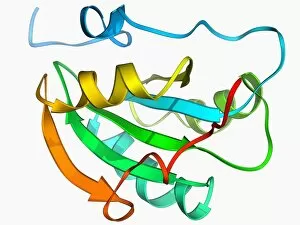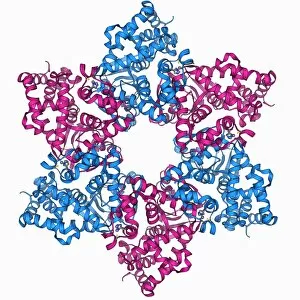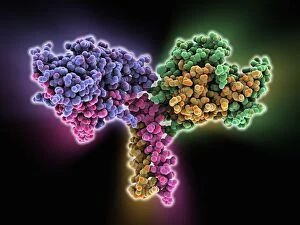Motor Protein Collection
"Unveiling the Marvels of Motor Proteins: The Driving Force behind Cellular Functions" Motor proteins
All Professionally Made to Order for Quick Shipping
"Unveiling the Marvels of Motor Proteins: The Driving Force behind Cellular Functions" Motor proteins, such as DNA helicase molecules and kinesin motor proteins F006/9693, F006/9619, F006/9618, and F006/9537, are the unsung heroes within our cells. These molecular motor proteins play a crucial role in various biological processes. DNA helicase molecules (F006/9509) act like tiny unwinding machines that separate double-stranded DNA during replication or repair. They ensure accurate transmission of genetic information by unzipping the tightly wound strands with precision. Another remarkable player is the Simian virus SV40 large T antigen (F006/9513), which also functions as a DNA helicase molecule (F006/9426). This viral protein hijacks host cell machinery to replicate its own genome efficiently. Kinesin they are fascinating entities involved in intracellular transport. With their unique structure and ability to move along microtubules, these motors shuttle vital cargo within cells. Their diverse roles range from transporting organelles to facilitating nerve signal transmission. Not limited to kinesins alone, myosin molecules (F006/9255) contribute significantly to muscle contraction. These force-generating motors enable us to perform essential movements like walking or even blinking an eye. Moreover, myosin fragment molecules (F006/9245) have been extensively studied for their involvement in cellular processes beyond muscle function. Their versatility makes them key players in tasks such as cytokinesis during cell division and maintaining cell shape. Understanding how these motor proteins work unlocks new avenues for medical research and potential therapeutic interventions. By deciphering their intricate mechanisms at a molecular level, scientists can develop targeted drugs that modulate their activity for treating diseases caused by malfunctioning or dysregulated motors. Motor proteins serve as nature's engines, propelling the intricate machinery of life.



















